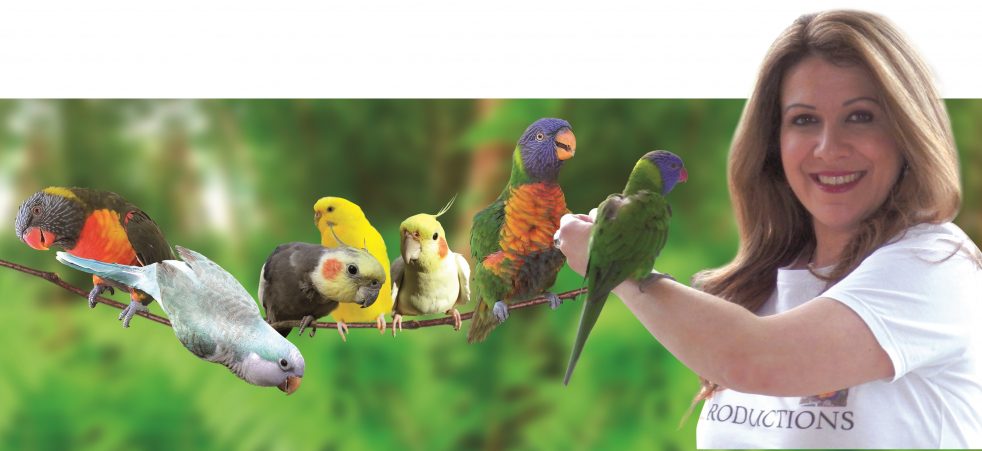A Shocking Look into Chinese Fur Farms
China supplies more than half of the finished fur garments sold in the United States
When undercover investigators made their way onto Chinese fur farms, they found that many animals are still alive and struggling desperately when workers flip them onto their backs or hang them up by their legs or tails to skin them. When workers on these farms begin to cut the skin and fur from an animal’s leg, the free limbs kick and writhe. Workers stomp on the necks and heads of animals who struggle too hard to allow a clean cut.
When the fur is finally peeled off over the animals’ heads, their naked, bloody bodies are thrown onto a pile of those who have gone before them. Some are still alive, breathing in ragged gasps and blinking slowly. Some of the animals’ hearts are still beating five to 10 minutes after they are skinned. One investigator recorded a skinned raccoon dog on the heap of carcasses who had enough strength to lift his bloodied head and stare into the camera.
Before they are skinned alive, animals are pulled from their cages and thrown to the ground; workers bludgeon them with metal rods or slam them on hard surfaces, causing broken bones and convulsions but not always immediate death. Animals watch helplessly as workers make their way down the row.
![]()
Undercover investigators from Swiss Animal Protection/EAST International toured fur farms in China’s Hebei Province, and it quickly became clear why outsiders are banned from visiting. There are no regulations governing fur farms in China—farmers can house and slaughter animals however they see fit. The investigators found horrors beyond their worst imaginings and concluded, “Conditions on Chinese fur farms make a mockery of the most elementary animal welfare standards. In their lives and their unspeakable deaths, these animals have been denied even the simplest acts of kindness.”
![]()
On these farms, foxes, minks, rabbits, and other animals pace and shiver in outdoor wire cages, exposed to driving rain, freezing nights, and, at other times, scorching sun. Mother animals, who are driven crazy from rough handling and intense confinement and have nowhere to hide while giving birth, often kill their babies after delivering litters.
![]()
The globalization of the fur trade has made it impossible to know where fur products come from. China supplies more than half of the finished fur garments imported for sale in the United States. Even if a fur garment’s label says it was made in a European country, the animals were likely raised and slaughtered elsewhere—possibly on an unregulated Chinese fur farm.
The only way to prevent such unimaginable cruelty is never to wear any fur. Take PETA’s pledge to be fur-free today!
WA considers register for animal cruelty
July 12, 2009 7:31PM
A DATABASE of people who commit brutal attacks against animals could help prevent those who go on to become murderers or serial killers, West Australian Police Minister Rob Johnson says.
The WA government will consider psychiatric assessments and building a specific database for people convicted of animal cruelty following a request by the RSPCA, Mr Johnson said.
“There’s a correlation between people who commit very violent crimes against other human beings having in their younger years committed very violent crimes against animals,” the Minister said.
“It is a fact that certainly some serial killers throughout the world during their younger years practise by killing animals and they obviously get some weird gratification from that.
“These people are sick that commit these crimes against animals, they need treatment.”
International research showed between 20 and 40 per cent of serial killers were involved in animal cruelty in their younger years, Mr Johnson said.
“If we can get those people when they have been convicted of serious cruelty to these animals, killing them, beheading them, shooting arrows through them, knifing them, whatever … then if we can get them treated we might break that cycle of going from animal cruelty and animal killings to violent serious offences against human beings,” he said.
Mr Johnson said he would seek the cooperation of WA police commissioner Karl O’Callaghan to create a database of people who commit brutal attacks.
“There is some profiling benefits there and indeed later on in life these people may well be future murderers,” he said.
“We need to profile them, we need to have them on a database so that we can look back and see what sort of actions these people have taken.”
RSPCA WA president Lynne Bradshaw said Australia was lagging behind other developed countries in recognising the correlation between animal cruelty and criminal behaviour.
“There is a strong correlation between cruelty to animals and escalating criminal behaviour including cruelty to human beings,” Ms Bradshaw said.
“That’s called the cruelty connection.
“The cruelty connection is well recognised in … the US, the UK, New Zealand, in fact we’re behind the times here at recognising what we call the red flag for human behaviour.
“So people that want to exhibit power and control over others often start out as animal abusers and it’s very important that it’s recognised.”
An RSPCA spokesman said infamous American serial killers Ted Bundy and David Berkowitz (better known as Son of Sam) had both been involved in animal cruelty in their younger years.
In Victoria, Paul Denyer, who killed three women in Frankston in 1993, had a history of abusing animals in his childhood, he said.
